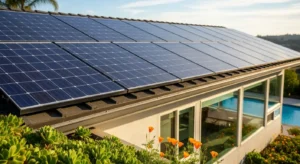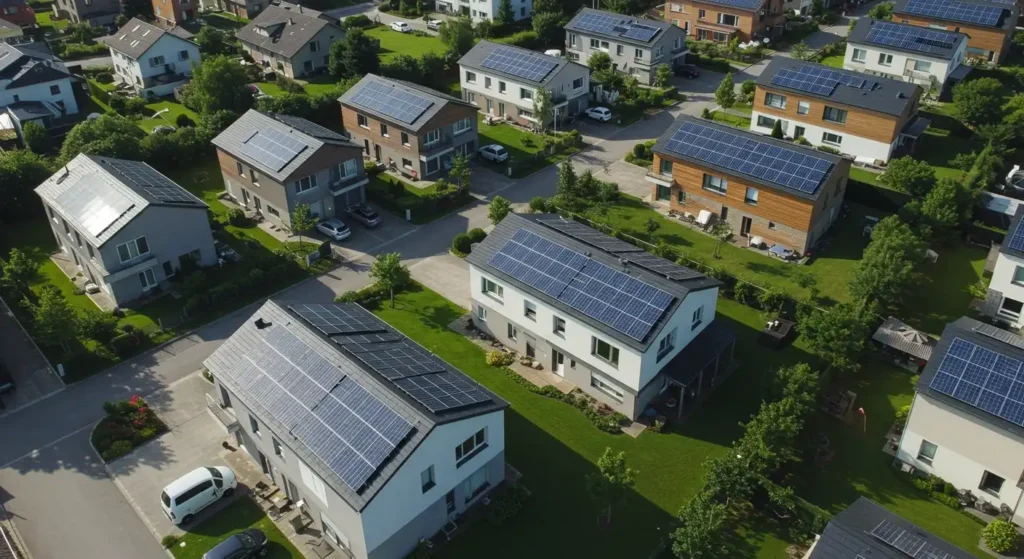California continues to lead the way in energy reform, and the sweeping legislation passed in 2025 is no exception. These new laws reshape how utilities manage wildfire costs, extend the state’s cap-and-trade program, and expand the electrical grid. For homeowners, renters, and businesses, the changes may feel overwhelming—but they also present unique opportunities to cut costs, embrace clean energy, and build a more resilient California.
Understanding the 2025 Energy Legislation
 The new package addresses some of the state’s most pressing challenges, including wildfire-related utility liabilities, rising consumer costs, and the urgent need for a greener grid. Three pillars stand out in the legislation:
The new package addresses some of the state’s most pressing challenges, including wildfire-related utility liabilities, rising consumer costs, and the urgent need for a greener grid. Three pillars stand out in the legislation:
- Cap-and-Trade Extension: California’s signature greenhouse gas emissions program has been extended to 2045, ensuring polluters continue to pay and funding flows toward environmental justice projects and clean energy development.
- Wildfire Utility Relief Fund: Utilities will receive assistance in managing the astronomical costs of wildfire damage. While some fear this will raise short-term rates, the fund is intended to stabilize the energy market and protect consumers from major utility bankruptcies.
- Grid Expansion: California will expand connections with neighboring states to better share renewable energy, reduce blackouts, and build resilience during extreme heatwaves and wildfires.
What These Laws Mean for Households
The everyday impact of these reforms will be felt most directly in homes and communities. Here’s how:
1. Utility Bills & Energy Costs
While some rate adjustments are expected as utilities recover wildfire costs, the long-term trajectory is toward cleaner, cheaper energy. Time-of-use billing will likely become more widespread, rewarding households who shift energy consumption to off-peak hours.
2. Rooftop Solar & Battery Adoption
The legislation encourages homeowners to invest in distributed energy resources. Rooftop solar panels paired with battery storage will gain stronger financial incentives, making homes more energy independent and resilient during outages.
3. Efficiency Retrofits
Programs tied to the new laws will likely support weatherization and energy-efficient appliances. Homeowners can expect rebates and tax credits for heat pumps, insulation, and other retrofits that cut energy use while lowering bills.
Community-Wide Impacts
The 2025 package goes beyond households, targeting equity, job creation, and environmental justice. The reforms are designed to ensure that clean energy benefits reach historically underserved communities.
- Equity in Energy Access: State funds will support clean energy projects in disadvantaged neighborhoods, including solar installations, microgrids, and clean transportation.
- Green Jobs: Expanding renewable infrastructure creates thousands of skilled jobs in installation, manufacturing, and maintenance, strengthening California’s clean tech economy.
- Wildfire Resilience: Grid upgrades, buried power lines, and localized microgrids reduce the risk of devastating outages during fire season.
Steps Residents Can Take Now
 Homeowners and renters don’t have to wait to act. Here are practical steps to prepare for the transition:
Homeowners and renters don’t have to wait to act. Here are practical steps to prepare for the transition:
- Review Your Current Energy Plan: Understand your utility’s rate structure. Shifting laundry, dishwashing, or EV charging to off-peak hours can save money.
- Explore Solar Financing: Incentives for rooftop solar are still strong. Look into power purchase agreements, state rebates, or federal tax credits.
- Add Battery Storage: Backup systems help keep the lights on during blackouts and allow homeowners to store solar power for use at night.
- Upgrade Appliances: Swap out gas furnaces or old AC units for high-efficiency heat pumps and modern HVAC systems.
- Get an Energy Audit: Many utilities offer free or discounted audits that highlight ways to reduce energy use and qualify for rebates.
Broader Environmental & Economic Implications
California’s 2025 energy laws also influence the state’s role on the national stage. As the fifth-largest economy in the world, California often sets standards other states later follow. Cap-and-trade extensions, expanded clean power sharing, and stronger wildfire resilience could serve as blueprints for other regions struggling with similar challenges.
Economically, the reforms position California to remain a hub for clean tech innovation. By attracting investment in solar, battery manufacturing, and electric vehicles, the state solidifies its leadership in the green economy of the future.
Challenges and Criticism
No policy package is without detractors. Critics worry that utility companies may use wildfire relief funds as a shield while continuing to pass costs on to consumers. Others argue cap-and-trade doesn’t go far enough in cutting emissions and that stronger direct regulations are needed. Transparency and oversight will be key in ensuring these reforms deliver on their promises.
Conclusion
The 2025 California energy laws represent both a challenge and an opportunity. For residents, the laws may mean higher bills in the short term but lower costs and more reliability in the future. For communities, the legislation strengthens resilience, expands access to clean energy, and creates jobs. And for the state as a whole, these reforms signal California’s ongoing commitment to leading on climate and energy policy.
By taking proactive steps—whether installing solar panels, upgrading home efficiency, or staying informed about rebate programs—Californians can turn these reforms into real benefits. The energy transition is underway, and those who prepare today will thrive tomorrow.
Looking for more insights? Check out our posts on California Powers Two-Thirds of Its Grid with Clean Energy and Port Electrification & Green Job Growth in California.

